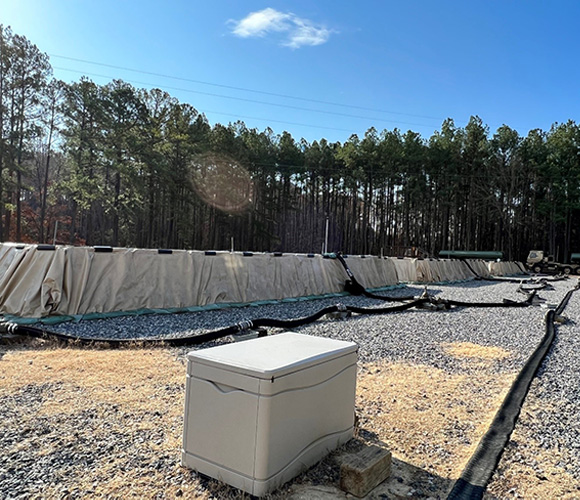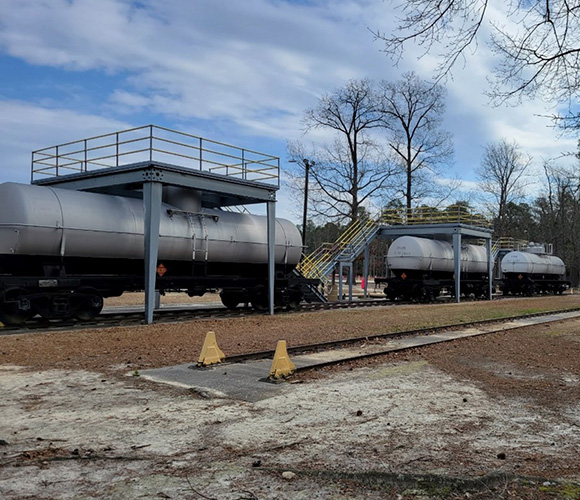Basic Petroleum Logistics Division (BPLD)
The Basic Petroleum Logistics Division (BPLD) is the primary training division of the Petroleum and Water Department focusing on the technical and tactical fuel operations within the U.S. Army Quartermaster School, Fort Lee, Virginia.
Mission
BPLD’s mission is to train, educate and develop new Soldiers and Marines on petroleum logistic systems and equipment, and assist with doctrine development, operational force readiness items, and requirements to satisfy petroleum operations for U.S. Forces globally.
Course
The Petroleum Supply Specialist, 92F10 courses consist of 10 weeks, and three days of extensive hands-on training with Army and Marine petroleum related equipment. Within the curriculum, we train Basic Petroleum Fundamentals (A Module), Quality Surveillance Procedures (B Module), Petroleum Tactical Systems (C Module), Survivability Training (D Module), Petroleum Inventory Accounting (E Module), Mobile Petroleum Refueling Vehicles (F Module), Bulk Petroleum Distribution Systems (G Module), and Inland Petroleum Distribution System (IPDS) (H Module).
BPLD has incorporated a new student centric learning program to modernize the way students learn. The new program consists of the Army Virtual Learning Environment (AVLE) initiatives to include 44 interactive multimedia instructions (IMI), 21 practical Exercises (PE), 40 simulated videos, and 13 digital training enablers (DTE). DTEs are a form of gamification that enables IETs, MOS-T, and operational military to rehearse and practice using refueling equipment in a virtual environment. Gamification provides a learner-centric bridge between traditional classroom instruction and hands-on training.
DTEs are available at the Army Sustainment Resource Portal and TRADOC App Gateway (TAG). You will be able to download WEBGL, APK, and IOS for Android and Apple products, as well as PC or MAC. This is ideal for student who want to gain knowledge prior to attending their scheduled course . (ASRP QR flyer)
Army Sustainment Resource PortalPetroleum Training Facility (PTF)
Nestled among Virginia’s beautiful pine forests, the BPLD training areas contain numerous collapsible, above ground, storage tanks ranging from 500 to 420,000 gallons. The training areas are divided into two sites which are the “Military in the Field” (MIF) and the “Petroleum Training Facility” (PTF). The training areas cover approximately 50 acres and provide the students with excellent facilities for hands-on training. The facility is designed provide the most realistic training while being environmentally safe. The MIF and the PTF are where skill level training is conducted for enlisted and officer training. Students are trained to use current Army and Marine Corps equipment fielded to units World-Wide.
The MIF provides various refueling vehicles, aviation refueling equipment and storage systems that are necessary to use many of the Army and Marine Corps refueling systems such as: Heavy Expanded Mobility Tactical Truck (HEMTT), HEMTT Tanker Aviation Refueling System (HTARS), Advanced Aviation Forward Area Refueling System (AAFARS), Fuel System Supply Point (FSSP), Modular Fuel System (MFS), Assault Hose Line (AHS), tanker series (M967, M969A1, M969A3, M1062), sling load operations, 50-800 GPM pump units, Hammonds Injector, Helicopter Expedient Refueling System (HERS), and Tactical Airfield Fuel Dispensing System (TAFDS).
The PTF provides 5.7 miles of pipeline, with a total capacity of over 44,000 gallons of pipeline fill. The total tankage capacity of the PTF is over 2.1 million gallons consisting of 11 storage tanks. There are four terminals: Base, Intermediate, Head and Depot. Each terminal is equipped with two 600 GPM pumps, except for the Head terminal, each have the commercial 700 GPM Filter Separator. The Depot terminal has three rail tank cars (10,000-gallon capacity each) used for loading and unloading operations. There are two pump stations, each with two 800 GPM pump strainers and equipped with two Launcher, Receiver and Strainer assemblies for pipeline scraper operations.















Future
In addition to the AVLE, the Petroleum and Water Departments has invested into Virtual Reality Training. The intent of this program is to provide strategic placement of Virtual Reality Labs both in the United States and abroad. Currently, the trials allow for Soldiers to perform individual MOS related tasks in a virtual environment. In the future, a network of Virtual Reality Labs could connect in real time for collective, and sustainment training.
Points of Contact
- DSN: 687-2706
- COMM: (804) 734-2706
- Email: usarmy.gregg-adams.tradoc.list.leee-pwdweb-org-mgr@army.mil
- DSN: 687-2792
- COMM: (804) 734-2792

